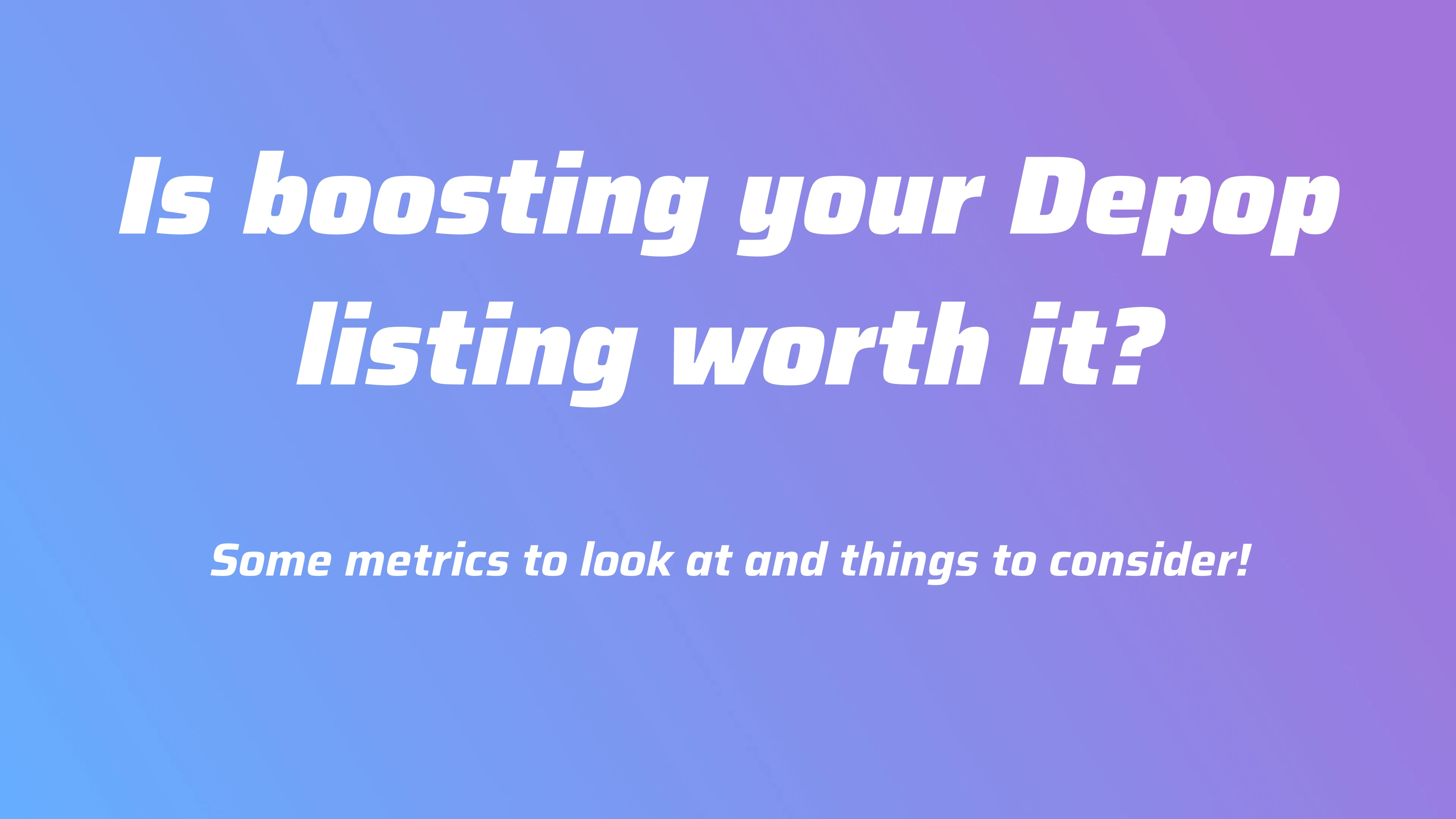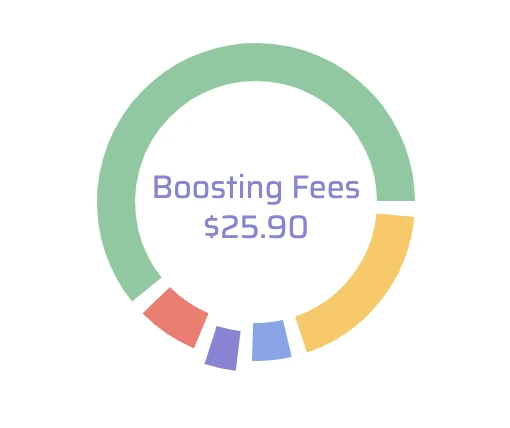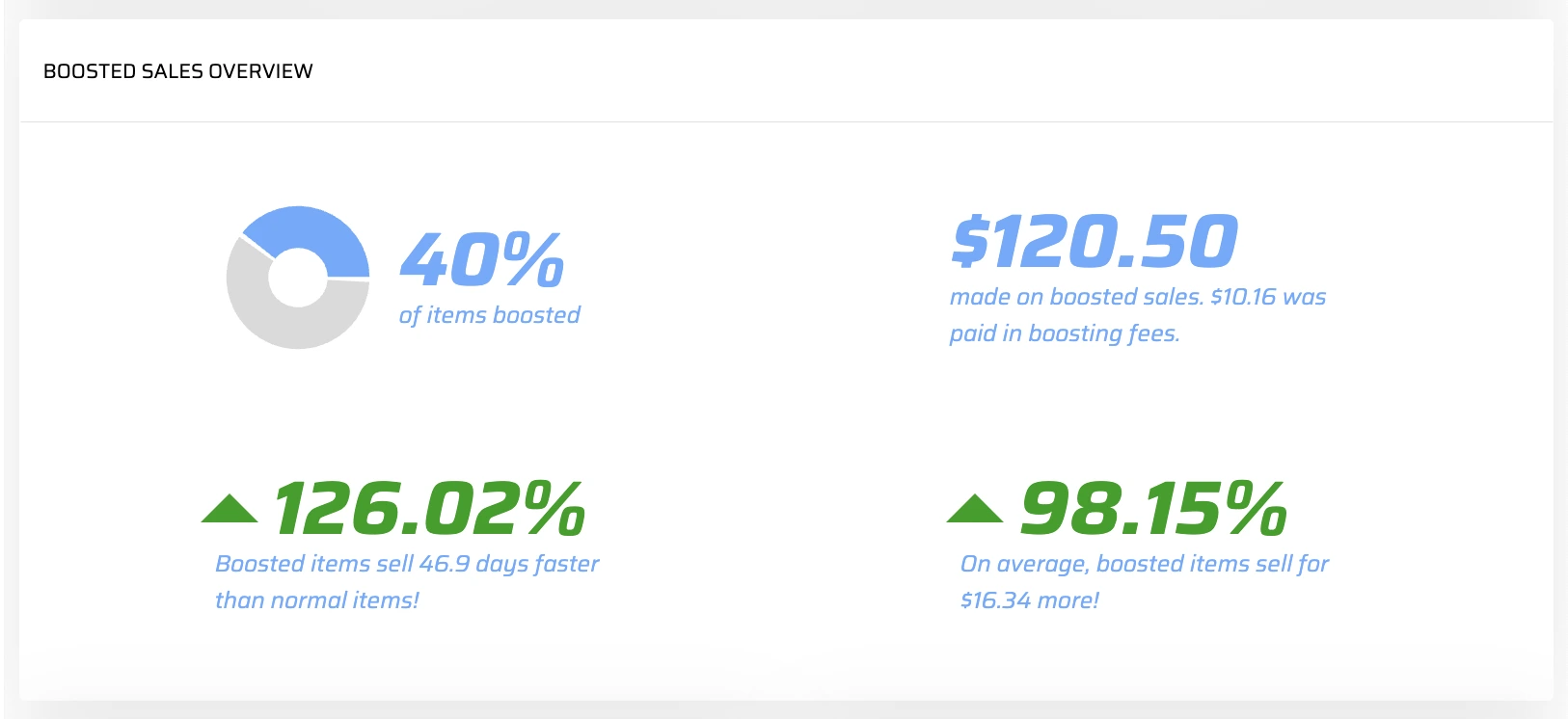
Is boosting your Depop listing worth it?
Background:
Boosted listings are one of the more recent features Depop has launched for its sellers. The whole concept is, if you boost a post, they’ll push out and prioritize your listing to relevant search criteria for a set period of time. This is a feature that other major reseller apps, such as Poshmark and Vinted, have also implemented similar functionality.
The goal:
I recently had a user reach out and request some more insights into their boosted listings numbers. I love to build specific features upon user request so I jumped right into it!
I started out by just tracking the boosted fees in relation to the total revenue coming in. This was pretty simple and a quick thing I could push out to the app. For those of you that are familiar with Mepop's earnings chart, this will look quite familiar. I've added a cell in the pie chart to represent the boosted fees (see the site's home page for an example if you're unfamiliar).

The bigger feature took some more thought. I had various ideas but it finally evolved into a simple overview of some key numbers in regards to your boosted listings. I figured there were a few things a shop owner wants to track:
-
Boosted Revenue vs. Boosted Fees
The primary metric I wanted to highlight is simple: How much revenue did boosted sales generate compared to the fees paid for those boosts? This is essential for understanding the return on your investment in boosting listings. -
Boosted vs. Non-Boosted Days Listed
Another critical point to track is whether boosted items sell faster. Comparing the average days boosted items remain listed to non-boosted ones helps answer the question, “Are boosted items moving quicker?” This insight can inform your inventory strategy and provide an idea of how quickly you can expect payouts. -
Boosted Price vs. Normal Price
Boosted listings might not only sell faster but also at higher prices. Comparing the average sale price of boosted items with non-boosted items can reveal whether increased exposure is driving higher demand—and thus higher prices. This metric might surprise you by showing additional value in boosting. -
Percentage of Boosted Sales
Finally, consider the percentage of your overall sales that are boosted. Evaluating this in conjunction with the other metrics will help you understand the overall impact boosting has on your shop’s performance. The more sales you’re boosting, the more attention these numbers deserve.
Sidenote: if your boosted listings sell substantially faster than your normal listings, you might be able to increase the boosted listing price. Just a thought 🤷🏼♂️

So that’s it! I built an overview, pushed it out, and now everybody has access to it.
Conclusion:
Boosting your Depop listings can be a powerful tool to increase visibility and sales, but it’s important to track the right metrics to determine if it's worth the investment. By keeping an eye on key figures like boosted revenue, time on the market, sale prices, and boosted sales percentages, you’ll get a clearer picture of how effective boosting is for your shop. These insights could help you make smarter decisions about pricing, inventory, and which items to prioritize. Happy selling!
